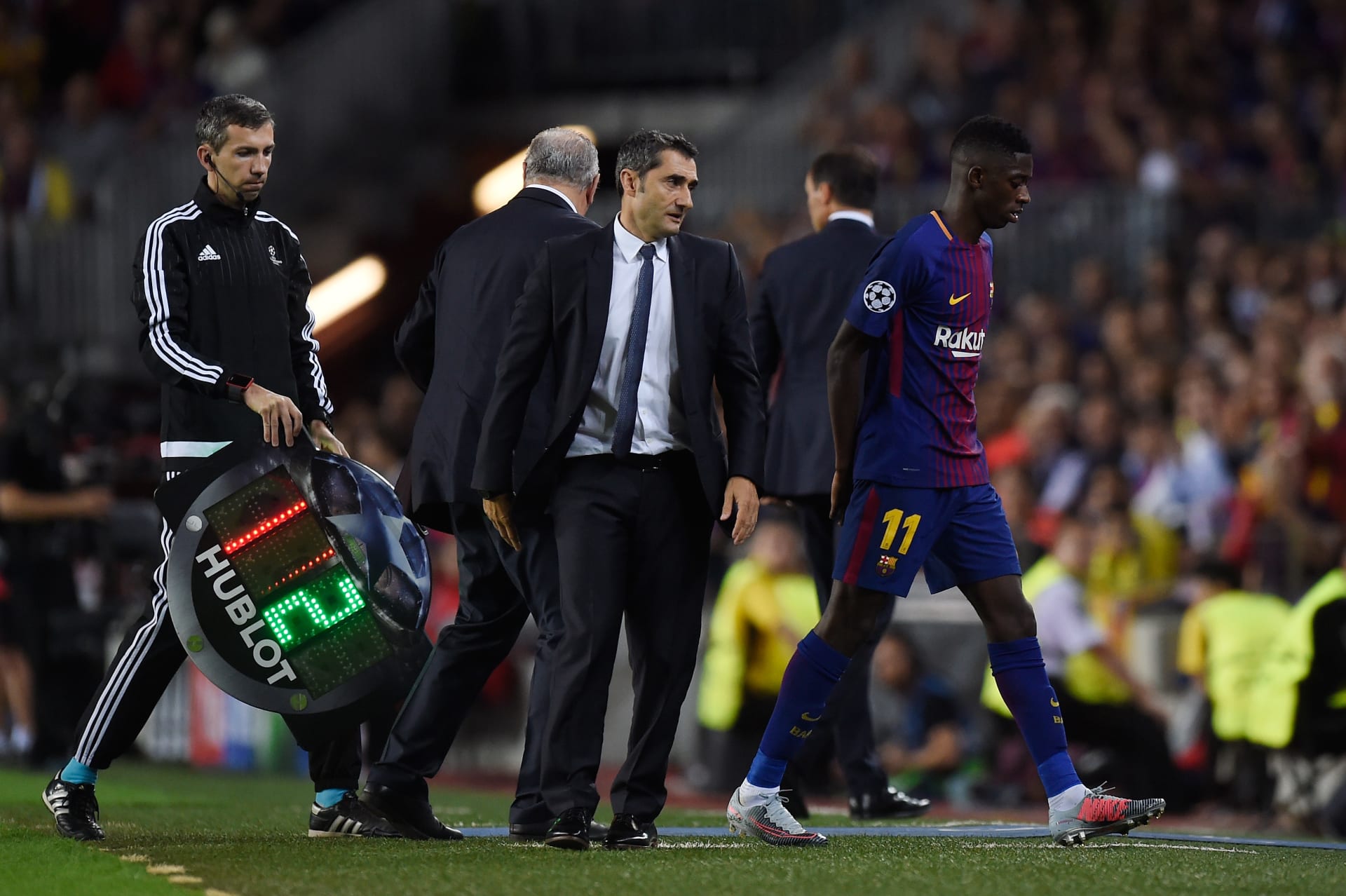دبي، الإمارات المتحدة (CNN) – اعتمد المدرب الإسباني لبرشلونة، إيرنيستو فالفيردي، على خطة 4-4-2 منذ قدومه للفريق الصيف الماضي، وهي الخطة التي ساهمت بتحسين المستوى الدفاعي للفريق الكتالوني، ما ساعده على تصدر الدوري الإسباني بفارق تسع نقاط عن أقرب ملاحقيه، أتلتيكو مدريد، و14 نقطة عن غريمه التقليدي، ريال مدريد، ولكن بعد عودة اللاعب الفرنسي المنتدب حديثا للفريق، عثمان ديمبيلي، هل سيعود فالفيردي لخطة الفريق المعتادة 4-3-3؟
استعان برشلونة بديمبيلي لتعويض رحيل النجم البرازيلي نيمار دا سيلفا، الذي انتقل إلى باريس سان جيرمان الفرنسي الصيف الماضي، لكن اللاعب الفرنسي عانى من إصابة أبعدته عن الملاعب لأكثر من ثلاثة أشهر قبل أن يعود مؤخرا.
غياب اللاعب الفرنسي الشاب، أجبر فالفيردي على تغيير خطة الفريق من 4-3-3 إلى 4-4-2، بسبب عدم وجود لاعب قادر على قيادة هجوم برشلونة من الجبهة اليسرى، بعد أن فشل الإسباني جيرارد ديلوفيو في إثبات أحقيته باللعب كأساسي في الفريق الكتالوني.
أما الآن، ومع عودة ديمبيلي، فمن المتوقع أن يعود المدرب الإسباني للخطة القديمة للفريق، بشرط أن يستعيد اللاعب الفرنسي مستواه بسرعة، ويتأقلم مع زميليه، الاوروغوياني لويس سواريز والأرجنتيني ليونيل ميسي.
تعرض برشلونة خلال الموسم الحالي لانتقادات بسبب فقدانه لبريقه الهجومي وتخليه عن أسلوب "التيكي تاكا" الذي اشتهر به، وهذا الأمر قد يدفع مدربه للعودة إلى هذا الأسلوب مع وجود سلاح فعال مثل ديمبيلي.
ويسعى فالفيردي لإبرام صفقات من أجل تفعيل خط الوسط، ولعل أبرزها، شراء النجم البرازيلي فيليبي كوتينيو، إذ يحتاج وسط الفريق الكتالوني إلى لاعب بسرعة النجم البرازيلي وإمكانياته الفنية.
أما على الصعيد الدفاعي، فتغيير الخطة قد يضر بالمنظومة الدفاعية لبرشلونة، إذ يساعد وجود أربعة لاعبين في خط الوسط على تقوية الجانب الدفاعي للفريق الكتالوني وخلق كثافة عددية أمام منطقة الجزاء، وهو الأمر الذي كان يفتقده برشلونة حين كان يلعب بخطة 4-3-3، فكيف سيحل فالفيردي هذه المشكلة؟
